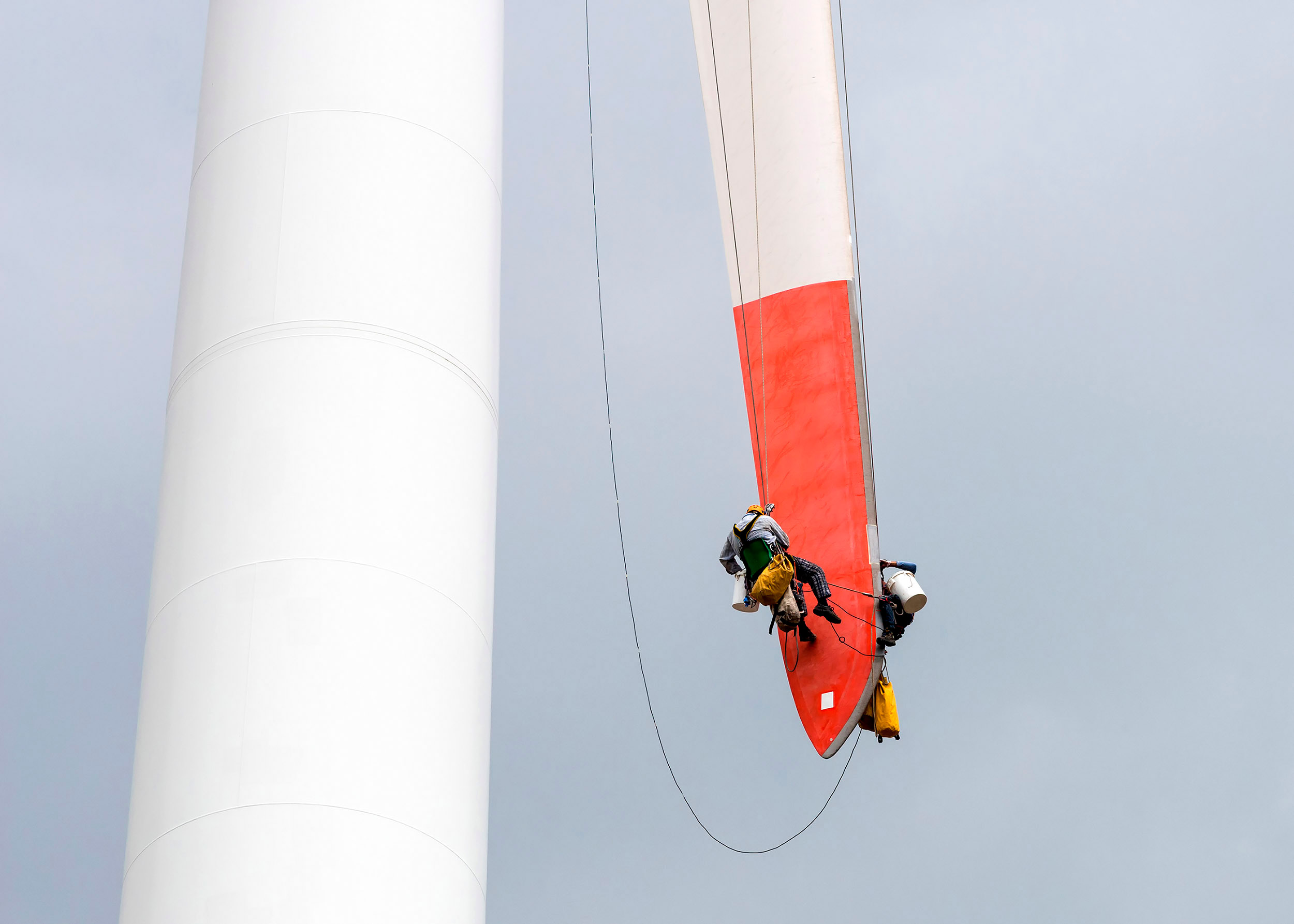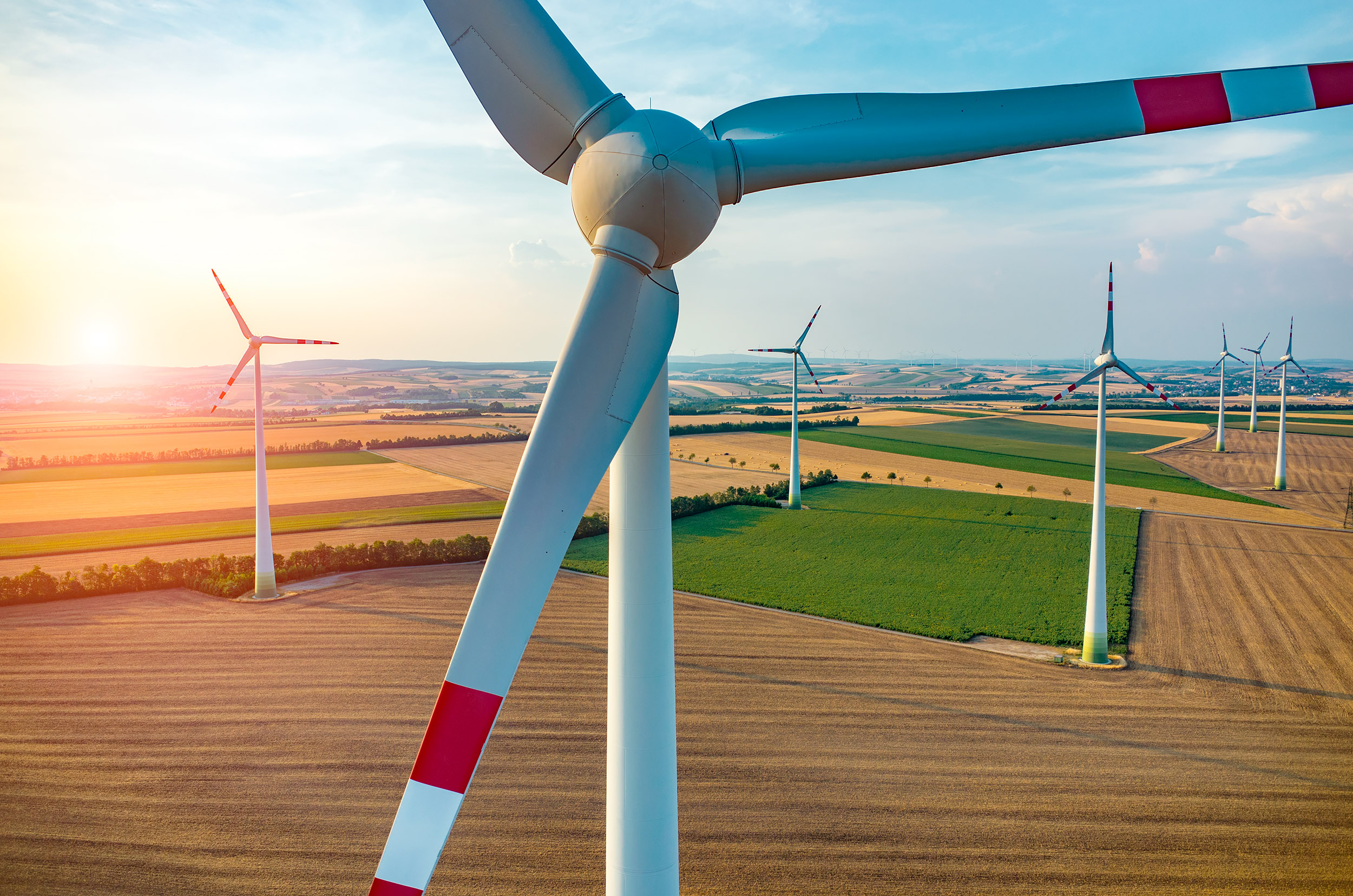Blade Runners
Hundreds of wind turbines stand tall on the edge of the California desert, their long white blades rotating, some fast, some lazily. Drive farther along Interstate 10 and suddenly the entire desert floor is awash with these 350-foot tall power sources that generate green energy to local homes and businesses.
What happens, though, when a turbine’s blades, buffeted by sand and gusty winds for years, need new protective tape or cleaning? Who fixes turbines that need maintenance on their rotators, gear boxes or bearings? At some point in a wind turbine’s life, it will need major corrective work and, until recently, energy companies have relied on manual labor to fix these problems.
This has entailed the lifting of “wind technicians” high above the ground in cranes with scrub brushes, hoses and other materials. Some companies dangle workers from helicopters to reach the blades and gear boxes or have them climb up and down the support column. All these methods can be dangerous, expensive and time-consuming.
Not to mention, repair work on any of the critical components renders turbines inoperable for a period of time.
Two assistant professors, Drs. Mahdi Yoozbashizadeh and Praveen Shankar, along with their graduate students from the Mechanical and Aerospace Engineering program are developing an automated robotic system – put in place by a heavy-lift drone — that will inspect, maintain and repair wind turbines, thus cutting costs and removing the hazardous element for workers. Funded by a one- year $200,000 grant from EdgeWind, a wind turbine company, the two hope to have a prototype ready by 2019.

“We want to make the tasks safer for humans, so they don’t have to work with all these tools and hazardous materials,” said Yoozbashizadeh, who over the past three years has conducted four industry-funded research projects in automation in aerospace.
Their goal is to remove workers from dangerous situations while introducing new career opportunities in the same field.
In this case, he said, “the drone will be able to jump from one turbine to another. Unlike manual labor, there won’t be any resting time, no lunch breaks, no hazardous situations for humans.”
Yoozbashizadeh said using manual labor to clean and repair turbines costs roughly $5,000 per turbine and takes numerous man hours. A technician in a crane can only do one turbine a day, and with the rapid growth and demand for wind electricity, additional technicians will be needed in the coming decade, costing firms thousands more dollars.
“We see it as a bright future for expansion of our work into other segments of automation, inspection and cleaning and other applications for hazardous environments for humans,” Yoozbashizadeh said. “It will reduce the cost significantly through automated work and make it autonomous and completely take out the human element.”
The researchers are combining their areas of expertise in the design and construction of the robotic system. Yoozbashizadeh is working to automate the process of the robot, while Shankar will be using his expert skills in designing and building the robot. The first phase will encompass completion of preliminary design and validation of the robotic system.
Much of the research will be done at California State University, Long Beach’s Collaborative Autonomous Systems Laboratory, where the professors and undergraduate engineering students will design and build the robot. Shankar, who established the lab three years ago, said they are still in the conceptual stage of building the cutting-edge robot.

“Conceptualizing it is the hard part because somebody comes to you and says, ‘Here is a task … how are you going to do it?’” said Shankar, who specializes in advanced control systems for complex aerospace applications. “So, you actually have to come up with an initial idea and, remember, it has to meet a lot of constraints, like how are you going to get it up there?”
The idea is to use a robot that would inspect the wind turbine for debris, wear and defects, focusing on the condition of the blade and determining whether it can be serviced or whether removal of any of the blades will be required.
If the defects are inside the material, the robot’s sensors will emit sound waves that show where the problem lies. Yoozbashizadeh said the introduction of an automated robotic system will not eliminate the need for workers. Technicians will be needed to control the drone, inspect the findings and oversee the repairs. A ground crew will operate the robot remotely, “but it’s all up to the robot,” Shankar added.
“It sounds like a reasonably simple task,” Shankar said, referring to the remote operation. “Having a robot do it is a whole new challenge.”
Victor Ong, a graduate student working on the project, said the advancements in automation, particularly in robots and artificial intelligence, will simplify what used to be complicated tasks. He pointed to such operations as palletizing robots used in Amazon’s warehouses, Tesla’s use of robotic arms on its car assembly lines, automated drone delivery systems and robotic systems to harvest fruit as examples where robots work effectively alongside humans.
Ong added that jobs are not necessarily eliminated with the addition of robots; humans are still the best assets employers can have. The use of robots and automation open up higher-skilled opportunities in related fields, such as development, design and technology.
“The introduction of automated robotic systems either to be used in the workforce or solve a particular problem, will cause a ‘role shift’ that would trigger evolution on the type of work available for humans and the key roles they will partake now and in the future,” Ong said. “However, automated robots are powerful tools that simplify work, perform mundane and difficult tasks, and reduce safety hazards for humans.”
Workers’ duties in emerging industries will continue to evolve as more efficient ways of doing the same work are developed, a scenario that society has grappled over the centuries, as in the Industrial Revolution and the later Technology Revolution in the 20th Century.